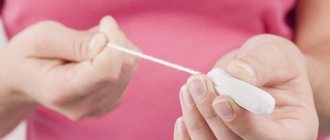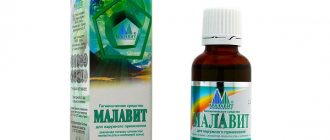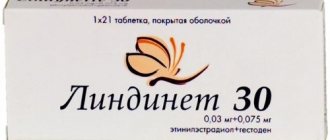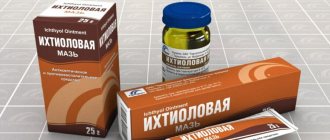Methods of using Vishnevsky ointment in gynecology
The ointment has long been used to treat female diseases. You can find many positive reviews about this product. For some women, the ointment helped get rid of infertility problems.
Gynecologists recommend using ointment:
- With an inflammatory process in the ovaries.
- With an inflammatory process in the urinary organs.
- With obstruction of the fallopian tubes, as well as with tubal infertility.
- For cervical erosion, thrush, endometriosis, bartholinitis, adhesions.
Vishnevsky ointment in gynecology is used before surgery, as well as after it for rapid healing of sutures. Modern gynecologists do not use ointment so often, believing that today there are many other effective remedies. Gynecologists who worked back in those days do not change their positions. For them, Vishnevsky ointment is the best remedy for various gynecological pathologies.
Every woman has the right to decide: to use Vishnevsky ointment or to pay attention to more modern drugs.
Use for infertility
Practice shows that many women have been cured of infertility with the help of Vishnevsky ointment. After cleaning the fallopian tubes, a tampon with ointment is inserted into the vagina and left until the morning. This procedure promotes healing of mucous membranes, restoration of patency of the fallopian tubes, and eliminates infection by microbes. Important!
To treat gynecological diseases, you can buy a ready-made product, mainly made in China, or make it yourself. Doctors insist that it is better to make a tampon yourself at home, because this is the only way to be sure that the product is absolutely safe and effective.
Making a tampon for introducing ointments or medicinal solutions into the vagina is quite simple. You need to cut a small piece of bandage and wrap it around your index finger in several layers, but you can also use another item of a similar shape. The edge of the bandage that will stick out from above needs to be folded into the middle and rolled over another layer.
The wrapped bandage should be removed from the finger, a small piece of cotton wool should be inserted into it, onto which the ointment is applied, and then the entire tampon is coated with the medicine. If the drug is used in the form of a solution, you need to dip the entire tampon into it and squeeze it out a little. A more hygienic method of administration is to use an ordinary pharmaceutical product.
If you cannot insert the tampon you made because of its softness, you can use the following method: wrap the bandage around a pencil, soak it in the solution, insert it into the vagina, and remove the excess.
Vishnevsky ointment
Balsamic liniment is used to treat the following gynecological ailments:
- inflammatory diseases of the appendages;
- infertility due to obstruction of the fallopian tubes;
- cervical erosion;
- candidiasis;
- pathological processes in organs located in the pelvis.
Tampons with Vishnevsky ointment are used to quickly restore the genitourinary system after surgery, which gives the following effect:
- destruction of pathogenic infectious microflora;
- activation of the regeneration process at the cellular level, which accelerates the healing of the mucous membrane;
- the state of microflora in the vagina is normalized.
Vishnevsky's balm is often used for adhesions, which block the passage of the fallopian tubes and cause infertility.
A tampon with this product must be kept in the vagina for 2 to 6 hours, and the procedure must be carried out before bedtime. The course of treatment is 10-14 days.
Dimexide
This drug is widely used in gynecology. Thanks to its properties, it quickly stops inflammation, activates the regeneration process at the cellular level, and restores the epithelial layer. Tampons with dimexide are used to treat gynecological diseases caused by pathogenic fungi, viruses and infections:
- vulvovaginitis;
- cervicitis;
- cystitis;
- thrush.
A tampon with dimexide is used to relieve the symptomatic picture of sexually transmitted diseases (chlamydia, syphilis, gonorrhea).
When treating infectious and viral diseases of the reproductive system, it is recommended to mix the drug with Lidaz in equal parts. If fibroids are diagnosed, to carry out therapy you need to soak a tampon with a solution obtained from mixing dimexide and water in a ratio of 1:3.
DETAILS: Gynecology fibroids endometriosis
Heparin ointment
With its help, you can cure many pathological diseases, in particular endometriosis and genital herpes. The ointment helps to quickly relieve inflammation and normalizes the functioning of blood vessels. When treating endometriosis, it helps eliminate painful symptoms, prevent further spread of the pathological process, and normalize the menstrual cycle.
The method of using medicated tampons is standard. To obtain positive dynamics in the treatment of gynecological diseases, it must be inserted every day before bed and removed in the morning.
Syntomycin ointment
https://www.youtube.com/watch?v=Be3k2OKq77U
This balm or emulsion is used in gynecology to treat the following conditions:
- vaginitis;
- genital infections of bacterial origin;
- erosion;
- purulent urethritis;
- inflammatory diseases of the genitourinary system.
Syntomycin ointment requires careful handling. Only a gynecologist can prescribe the use of this drug, who will indicate the effective and safe dosage, as well as the duration of the course of therapy. To treat erosion of the uterine cervix, a tampon with 10% ointment is inserted once a day. The course of therapy is 2 weeks. Before the next use, you must take a break of 7 days.
Ichthyol
An effective broad-spectrum drug is ichthyol ointment, which is used to treat various pathologies. The cream is used for the following purposes:
- relieves inflammation;
- has an antiseptic effect;
- relieves swelling;
- normalizes blood circulation;
- is a good pain reliever;
- resolves infiltrates of inflammatory nature.
Ichthyol ointment in gynecology is prescribed in case of diagnosis:
- adnexitis;
- erosion;
- polycystic disease;
- infectious and inflammatory lesions of the vaginal mucosa;
- vaginosis.
Levomekol
This remedy is used to treat diseases caused by pathogenic microflora. Levomekol is always included in the complex of antibacterial therapeutic measures. Gel for tampons is used in the presence of the following diseases:
- inflammation on the ovary;
- rotting of seams;
- cervicitis;
- colpitis;
- erosion;
- cyst;
- rupture of the uterine body, vagina;
- infection in a postoperative wound;
- the formation of inflammatory, purulent foci on the genitals.
The active components of the drug do not have the ability to penetrate the circulatory system, so the drug can be used without fear by women during pregnancy and breastfeeding, as well as with thrush.
Tetracycline
Tetracycline ointment is considered one of the best antibacterial agents. It is used in the treatment of various diseases caused by pathogenic microflora. The drug is especially effective in helping with inflammation of the appendages and in the treatment of genital herpes. The method of application for tampons is standard.
Erythromycin
Erythromycin ointment is prescribed for pathologies that were caused by the entry of a viral pathogen into the genitourinary system. The course of treatment is prescribed by the doctor, since with prolonged use of the ointment, the body becomes accustomed to the drug and develops resistance to the virus.
How to use Vishnevsky ointment correctly?
The gynecologist prescribes ointment for various purposes. Most often with candidiasis, infertility. Balsamic liniment is used in the form of tampons that are inserted vaginally. First you must make a tampon, then soak it in ointment. The tampon must be inserted into the vagina before bed and removed in the morning. Be sure to consider your individual tolerance to avoid irritation, redness, and swelling. The course of therapy is about two weeks. Remember that if you use the product once, there will be no result.
Chemical composition of the ointment
The therapeutic effect is achieved due to the natural and harmless composition of the drug, which includes:
| Substance name | Description |
| Birch tar | A black liquid product obtained from wood distillation (contains a lot of paraffin) |
| Xeroform | A medicine that belongs to the group of antiseptics and disinfectants. |
| Aerosil | Colloidal silicon dioxide is used as a thickener and stabilizer for liniments (ointments) and suspensions. |
| Castor oil | Vegetable oil produced by cold pressing the seeds of the castor bean (medicinal plant). Compound:
|
Liniment is produced in tubes of 30 g and jars of 40 g. The ointment is a thick brown liquid with a specific odor. The price of the drug is 30-50 rubles. depending on the manufacturer and release form.
Treatment of infertility with Vishnevsky ointment
It has long been proven that the ointment perfectly draws pus from wounds, so gynecologists often use it to treat chronic endometritis (inflammatory process of the endometrium).
In case of female infertility, an operation is required to clean the fallopian tubes. Then tampons with Vishnevsky ointment are prescribed in order to speed up the healing of the female organs. First, a small amount of ointment is administered, gradually increasing the dosage to 20 ml of ointment. In the morning, after taking out the tampon, you need to douche with chamomile decoction.
Statistical data! Studies have shown that 56% of women who used Vishnevsky ointment completely cured infertility. Other treatments do not produce the same results.
How to make gynecological tampons?
To do this, you need to stock up on sterile medical bandages and cotton wool. First, you need to cut a strip of bandage 10-15 cm long and wrap a small ball of cotton wool rolled into it. Apply ointment to it and insert it vaginally, leaving the tail to remove the medicinal product after use. The tampon is left in place until the morning and overnight. You can use 12-15 g of product per procedure. After extraction, you need to douche with a chamomile decoction.
The therapeutic effect of a tampon can be recognized by the appearance of discharge, which in some cases is mixed with pus or blood.
This indicates that the home remedy has a cleansing and restorative effect and can heal the female reproductive system. The course of therapy with medication lasts 10-15 days. The healing balm is prescribed as an additional auxiliary component, but sometimes it gives very good results without other medications.
If necessary, you can make a tampon yourself. For this you will need:
- scissors;
- alcohol;
- cotton wool;
- sterile bandage;
- Vishnevsky ointment.
Before making tampons, the scissors should be treated with alcohol to disinfect. Cut a strip fifteen centimeters long from the bandage. Roll the cotton into a ball, which must be placed on the cut-out bandage.
You can also make tampons simply from a sterile bandage or gauze. To do this, take a small piece of gauze, roll it up as tightly as possible and form a tampon of the required size. It is tied with a strong thread, previously disinfected, or with a narrow piece of bandage.
The resulting tampon should be soaked in ointment and inserted into the vagina before bed. The thread (bandage) is left outside so that by pulling it, you can remove the tampon from the vagina. In the morning the tampon is removed.
Contraindications to treatment with Vishnevsky ointment are allergies to its components, pregnancy and lactation, as well as childhood.
Should I use Vishnevsky ointment or not?
Many doctors consider the ointment to be one of the safe and effective remedies, which has virtually no side effects or contraindications. In modern medicine, Vishnevsky ointment is the best remedy for treating ulcers and boils, but in gynecology it is now used extremely rarely. Gynecologists believe that the ointment is no longer as relevant as before; it must be used with other drugs. Today, pharmacology offers a large number of more effective ointments.
More recently, scientists have proven that Vishnevsky ointment is harmful because when it creates a dense fatty film, it accumulates bacteria, which lead to serious complications and slow down the healing process. It is best not to experiment and refuse to use the ointment yourself. Remember, treatment can only be prescribed by your attending physician after an examination.
Possible side effects
Abuse of the drug and improper use leads to allergic reactions:
- burning and itching in the vagina and on the skin;
- redness and swelling of the mucous membrane, labia;
- rash on the labia minora;
- painful sensations in the pelvis.
When you observe the first signs, you must take an antihistamine and immediately consult a doctor.
Contraindications and restrictions
Like any medicinal product, liniment has a number of restrictions for use:
- it is not intended for oral use;
- a natural contraindication is therapy in the presence of individual intolerance to one of the components;
- It is forbidden to use the ointment for acute genital infections, in the presence of large ulcers on the mucous membrane of the genital organs;
- the limitation is impaired renal function.
Read the article at the link on how to treat thrush during menstruation and whether it is necessary to postpone therapy during menstruation.
It should be borne in mind that one of the distinctive properties of birch tar is the ability to increase susceptibility to ultraviolet radiation, therefore, during therapy, time spent in the sun should be monitored.
The balm should be used during pregnancy and breastfeeding with extreme caution, and be sure to discuss the possibility of such treatment with your doctor.
Classification of cervical erosion
According to the level of influence and nature of the consequences, erosive lesions of the cervix are divided into several types.
- Congenital uterine erosion. This type occurs in girls at a young age and practically does not manifest itself in any way. Its diagnosis is revealed during colposcopy - an instrumental procedure for examining the vaginal and uterine space by a gynecologist. Congenital erosion looks like a pronounced scarlet area on the inner surface of the cervix. This type of uterine erosion is considered completely safe and does not require medical intervention or elimination, because it does not cause pain or pose a threat to the process of childbirth. In most cases, it is eliminated on its own during pregnancy due to changes in the increased hormonal activity of the female body.
- True uterine erosion. This type of erosion differs from congenital erosion and is not safe. The source of its occurrence is located in the pharynx of the uterus (the place where the canal passes directly into the uterine cavity). Although it is considered a benign deviation of the vaginal mucosa, it affects the tissue of the inside of the cervix, causing the formation of purulent abscesses. As a result, a woman may suffer from unpleasant purulent discharge with a pungent odor, lasting for 1.5–2 weeks. Such erosion is common to the majority and is a common pathology, but in the absence of proper medical attention it can develop into pseudo-erosion.
- Ectopia of the cervix (pseudo-erosion). Most often occurs in women under 40 years of age. It can be congenital, acquired, complicated, papillary, glandular or mixed. Such ectopia is expressed by an increase in the cylindrical epithelium of the uterus and its extension beyond the cervix into the vagina, which provokes a hormonal imbalance and causes subsequent irritation. The whole process is accompanied by itching of the surface of the female genital organ, menstrual cycle disorder, and the discharge of strange blood and mucous masses from the vagina. A complex form of pseudo-erosion prevents a woman from becoming pregnant, and in the case of a recurrent stage leads to cancer.
In addition to the listed main types of erosion, several more varieties can be distinguished depending on the nature of the manifestation:
- endometriosis – expressed in an increase in cervical tissue beyond the mucous membrane of the uterine fundus;
- ectropion - manifests itself in the inversion of the mucous membrane of the cervical canal into the vaginal cavity (occurs as a consequence of abortion or postpartum pathology);
- leukoplakia - is a compaction and further coarsening of the epithelium, which leads to thickening of the cervix and the appearance of white spots on it (an absolute deviation from the normal functioning of the uterine epithelium);
- polyp is a wart-like phenomenon on the surface of the cervix, causing pain during sexual intercourse and subject to mandatory removal: you need to get rid of it as soon as possible by contacting specialists immediately after identifying the symptoms;
- condylomas are carriers of viral microorganisms that enter the mucous membrane of the cervix and signal the danger of cancer.











